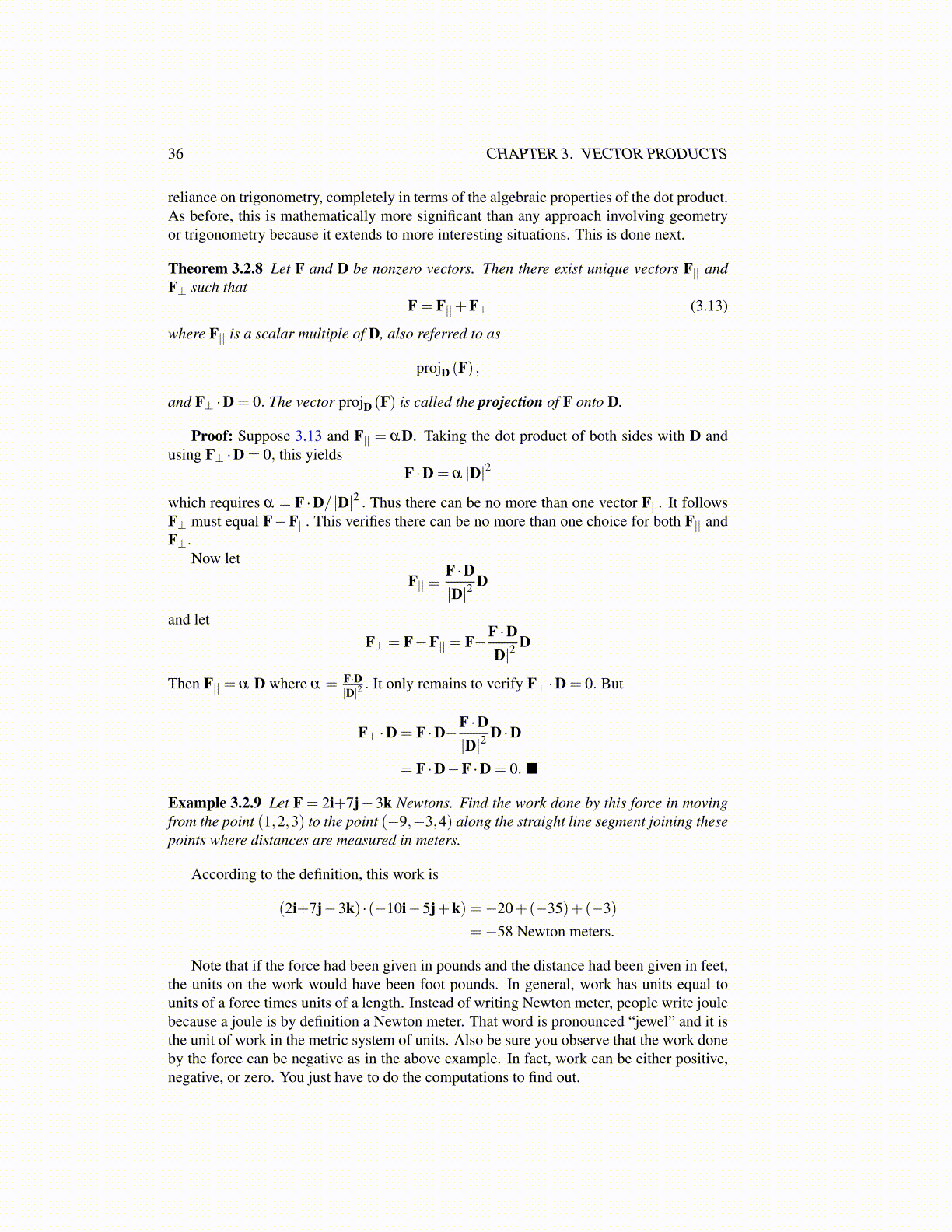
36 CHAPTER 3. VECTOR PRODUCTS
reliance on trigonometry, completely in terms of the algebraic properties of the dot product.As before, this is mathematically more significant than any approach involving geometryor trigonometry because it extends to more interesting situations. This is done next.
Theorem 3.2.8 Let F and D be nonzero vectors. Then there exist unique vectors F|| andF⊥ such that
F = F||+F⊥ (3.13)
where F|| is a scalar multiple of D, also referred to as
projD (F) ,
and F⊥ ·D = 0. The vector projD (F) is called the projection of F onto D.
Proof: Suppose 3.13 and F|| = αD. Taking the dot product of both sides with D andusing F⊥ ·D = 0, this yields
F ·D = α |D|2
which requires α = F ·D/ |D|2 . Thus there can be no more than one vector F||. It followsF⊥ must equal F−F||. This verifies there can be no more than one choice for both F|| andF⊥.
Now letF|| ≡
F ·D|D|2
D
and letF⊥ = F−F|| = F−F ·D
|D|2D
Then F|| = α D where α = F·D|D|2
. It only remains to verify F⊥ ·D = 0. But
F⊥ ·D = F ·D−F ·D|D|2
D ·D
= F ·D−F ·D = 0. ■
Example 3.2.9 Let F = 2i+7j−3k Newtons. Find the work done by this force in movingfrom the point (1,2,3) to the point (−9,−3,4) along the straight line segment joining thesepoints where distances are measured in meters.
According to the definition, this work is
(2i+7j−3k) ·(−10i−5j+k) =−20+(−35)+(−3)=−58 Newton meters.
Note that if the force had been given in pounds and the distance had been given in feet,the units on the work would have been foot pounds. In general, work has units equal tounits of a force times units of a length. Instead of writing Newton meter, people write joulebecause a joule is by definition a Newton meter. That word is pronounced “jewel” and it isthe unit of work in the metric system of units. Also be sure you observe that the work doneby the force can be negative as in the above example. In fact, work can be either positive,negative, or zero. You just have to do the computations to find out.